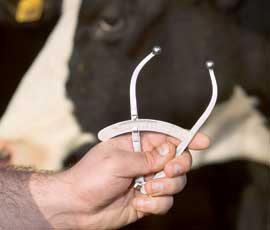Tighter cattle controls loom as cull beckons

Stronger measures to control bovine tuberculosis in cattle will be unveiled alongside a controversial plan for a badger cull to combat the disease in England.
DEFRA secretary Caroline Spelman is expected to announce plans for a limited badger cull in designated TB hotspot areas over four years. But her proposal will be accompanied by a package of measures to curtail bovine TB in livestock.
Mrs Spelman was set to outline her plan to ministerial colleagues during a Cabinet meeting on Thursday (7 July). An official announcement is expected next week, although Farmers Weekly understands it could come sooner.
Scientific experts, led by government chief scientist Bob Watson and chief vet Nigel Gibbens, believe “co-ordinated, sustained and simultaneous” culling could lead to a 16% reduction in the number of herds hit by bovine TB.
Culling using trapping or controlled shooting could begin as soon as next spring in TB hotspot areas of at least 150km² where farmers responsible for 70% of the land are willing to enter a four-year agreement.
But further talks with stakeholders are likely to be needed to pin down how licences are issued. Accompanying measures are also seen as vital, according to the summary published this week of a top-level scientific meeting held in April. So too is managing farmers’ expectations that a cull is no quick fix to control bovine TB.
“If culling is undertaken, it should be in addition to, not instead of, existing bovine TB control measures in cattle, which should be maintained and strengthened,” says the summary of the key conclusions.
DEFRA officials remained tight-lipped about the contents of any announcement as Farmers Weekly magazine went to press. But advisers have previously warned that TB will only be curtailed by increasing cattle controls alongside a cull.
Advisers have also recommended the government ensures there is comprehensive awareness and compliance with existing TB control measures among farmers before any cull begins.
Additional measures could include more frequent TB testing in high-risk areas, improvements to pre-movement testing regimes and increased controls in higher-risk herds with a history of TB – as well as a strengthening of enforcement activity.
Farm leaders are particularly keen to show the industry can keep its own house in order following evidence that some farmers have illegally swapped ear-tags between cattle to get around TB restrictions.
The Badger Trust, which is opposed to culling, said bovine TB would continue to prove difficult to eradicate without universal annual testing and tighter movement controls. Killing badgers was not an alternative, it said.
